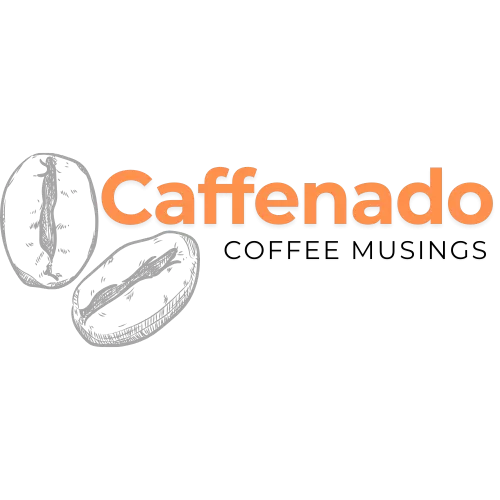Why Is Coffee Beans So Expensive?
You might wonder why your beloved coffee is so pricey these days. Let's investigate: climate change plays a big role, with unpredictable weather and droughts impacting harvests in major producers like Brazil, driving up costs. Meanwhile, supply chain hiccups lead to expensive transportation and labor challenges, making it all the way to your local café. Coffee's growing demand adds more pressure, especially as new markets sip up more of this treasured brew. Add inflation and economic issues into the mix, and it becomes clear why your drink costs more. Stick around, and you'll uncover more layers to this intriguing story.
Key Takeaways
- Rising temperatures and extreme weather events reduce coffee yields, increasing scarcity and prices.
- Supply chain disruptions, including labor shortages and logistical issues, elevate production and transportation costs.
- Inflation raises costs throughout the coffee supply chain, impacting consumer prices.
- Global demand, especially in emerging markets, outpaces supply, driving up coffee bean prices.
- Investments in sustainable farming practices are costly but essential for long-term coffee supply stability.
Climate Change Impact

As climate change accelerates, its impact on coffee prices becomes increasingly evident. The rising temperatures and unpredictable weather events you're witnessing are drastically affecting coffee beans, especially in major regions like Brazil and Vietnam.
With these environmental changes, droughts have become more frequent, leading to reduced yields. This, in turn, has increased competition for the coveted arabica coffee, driving up prices as demand grows.
The challenges don't stop there. Extreme weather, including frost and floods, causes significant crop losses, pushing coffee prices even higher. As a coffee lover, you're probably noticing these price surges at your local café or grocery store.
Farmers are facing higher costs as they invest more in crop protection to combat pests and diseases, which thrive under changing environmental conditions. This necessity further raises production costs.
Moreover, the supply chain is feeling the strain, with the growing demand for quality beans outpacing current supply. The sustainability of coffee farming is under threat, requiring substantial investment in agricultural research and resilient practices.
Let's investigate the importance of these practices to guarantee a steady supply of your favorite morning brew despite climate challenges.
Some farmers are turning to green coffee production, which contains beneficial compounds like chlorogenic acid that can help regulate blood sugar levels while maintaining crop value.
Supply Chain Challenges
While climate change disrupts coffee production, the supply chain faces its own set of obstacles that directly impact coffee prices. Let's examine how these issues affect you at the coffee shop.
Droughts in Brazil and Vietnam, major coffee-producing countries, have led to lower crop yields. This decrease in supply creates a squeeze, forcing coffee producers to compete for the limited beans available. As a result, the price of coffee rises, affecting both the supply and demand balance.
Transportation and processing costs are also climbing, driven by inflation and logistical challenges. These rising costs ripple through the supply chain, ultimately affecting the price you pay for your cup of coffee.
Labor shortages in coffee-producing regions further complicate the situation. With fewer workers available, coffee producers face higher labor costs, increasing production expenses. These costs are then passed on to consumers like you.
To maintain profit margins amid these rising costs, coffee sellers are cutting discounts. This decision contributes to the overall increase in coffee prices at your local coffee shop.
Understanding these supply chain challenges helps explain why your favorite brew might cost a bit more than before.
Despite these challenges, coffee beans remain a low-carb option for those following specialized diets like keto.
Market Dynamics

Driven by a complex interplay of supply, demand, and external factors, market fluctuations greatly influence the price of coffee beans. You might wonder why your daily cup of coffee costs more these days. Well, climate change plays a huge role in this. Unpredictable weather like droughts in Brazil and Vietnam has slashed the supply of arabica beans, leading to fierce competition in the coffee market.
As the cost of coffee rises, you're not alone in feeling the pinch.
Demand and Supply
Increased coffee consumption globally, especially in fast-growing economies like China, strains the limited supply. This imbalance between supply and demand causes prices to soar, affecting the cost of various coffee products.
As demand grows, so does the pressure on the already tight coffee market.
Rising Costs
The production costs are rising too, driven by inflation, labor shortages, and expensive shipping. These factors push prices up at every stage of the coffee supply chain.
Major coffee companies have to pass these costs onto you, often by eliminating discounts to protect their profit margins.
Understanding these market forces helps explain why a cup of coffee isn't as affordable as it once was.
Quality control measures like using burr grinder systems for consistent grinding add to the overall production expenses.
Conclusion
To sum up, the rising cost of coffee beans isn't just about one factor; it's a complex blend of climate change, supply chain issues, and market fluctuations. You've seen how unpredictable weather affects coffee growth, while logistical obstacles make it harder to get beans to your cup. Additionally, market demand plays a key role. By understanding these elements, you're better equipped to appreciate why your favorite brew may cost a bit more. Stay informed, and enjoy your coffee!







